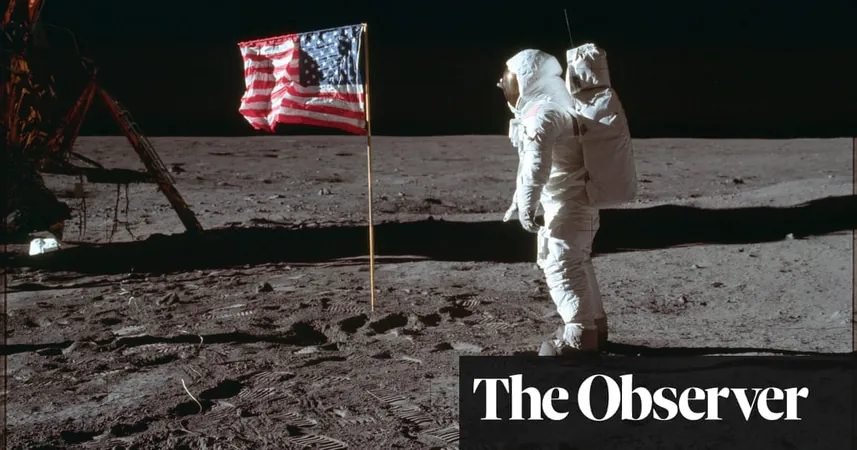
Meet Tom Bacon: The Unsung Hero Who Helped Take Humanity to the Moon!
2024-11-02
Author: Nur
It's been nearly 70 years since a visionary scientist—Francis Thomas Bacon—brewed up a revolutionary green energy source that propelled mankind's iconic moon landing, yet many have never heard his name. Born in Essex and nurturing his brilliance in Cambridge, Bacon invented the first functional hydrogen-oxygen fuel cell, a breakthrough that played a pivotal role in the success of the Apollo 11 mission.
Remarkably, Bacon's contributions have remained in the shadows for far too long, overshadowed by the more widely recognized figures of the space race. Now, the charity Cambridge Past, Present & Future aims to rectify this oversight by honoring Bacon with a blue plaque at his historic residence in Little Shelford, Cambridgeshire.
The fuel cells—affectionately dubbed “Bacon Cells” by NASA—were critical for the Apollo missions. They didn’t just generate electricity for essential systems like communication, air conditioning, and lighting; they produced clean drinking water—an absolute necessity for the astronauts. "Normally, a battery runs down and needs recharging," Bacon explained in a BBC interview before the moon landing. "With this device, as long as you continue feeding hydrogen and oxygen into it, and remove the water formed, it powers indefinitely—and the astronauts drink the water."
Bacon's innovation did not go unnoticed. President Richard Nixon even acknowledged his impact on the moon mission by saying, "Without you, Tom, we wouldn’t have gotten to the moon." His groundbreaking work laid the foundation for ongoing renewable energy advancements. Today, scientists are still inspired by his legacy as they explore new technologies in solar energy, hydrogen generation, and battery storage.
But who was Tom Bacon beyond his scientific contributions? He was a direct descendant of the famous Elizabethan philosopher Sir Francis Bacon, and he began his journey into fuel cell research in 1932 after graduating from Cambridge. Fascinated by the possibilities of fuel cells, he took a leap of faith, leaving a stable job to pursue his groundbreaking research despite facing financial challenges and skepticism about its practical applications.
A century earlier, physicist William Grove briefly outlined the concept of fuel cells, but Bacon transformed it into a practical solution. His tireless dedication ultimately paid off in the 1960s when NASA adopted his technology for the Apollo program, with significant investment contributing to his work.
After the Apollo 11 astronauts—Neil Armstrong, Buzz Aldrin, and Michael Collins—returned from their historic journey, they met Bacon at Downing Street, gifting him a signed photograph of Armstrong's famous first step on the lunar surface. It was a moment of recognition, but sadly, outside the realm of scientific circles, Bacon remained a humble, modest figure.
Sadly, Francis Thomas Bacon passed away in 1992, but experts believe that many of his innovative ideas and potential applications are only starting to gain acknowledgment. According to Cambridge professor Clemens Kaminski, "If we can crack the problems of generating and storing hydrogen sustainably and efficiently, the fuel cell could revolutionize everyday life."
For anyone interested in clean energy and the incredible stories behind major scientific achievements, the story of Tom Bacon serves as an inspiring reminder of how one man's vision and determination can change the world—one moon landing at a time. So, the next time you hear about space exploration and green technology, remember Tom Bacon, the unsung hero behind the journey to the moon!




 Brasil (PT)
Brasil (PT)
 Canada (EN)
Canada (EN)
 Chile (ES)
Chile (ES)
 España (ES)
España (ES)
 France (FR)
France (FR)
 Hong Kong (EN)
Hong Kong (EN)
 Italia (IT)
Italia (IT)
 日本 (JA)
日本 (JA)
 Magyarország (HU)
Magyarország (HU)
 Norge (NO)
Norge (NO)
 Polska (PL)
Polska (PL)
 Schweiz (DE)
Schweiz (DE)
 Singapore (EN)
Singapore (EN)
 Sverige (SV)
Sverige (SV)
 Suomi (FI)
Suomi (FI)
 Türkiye (TR)
Türkiye (TR)